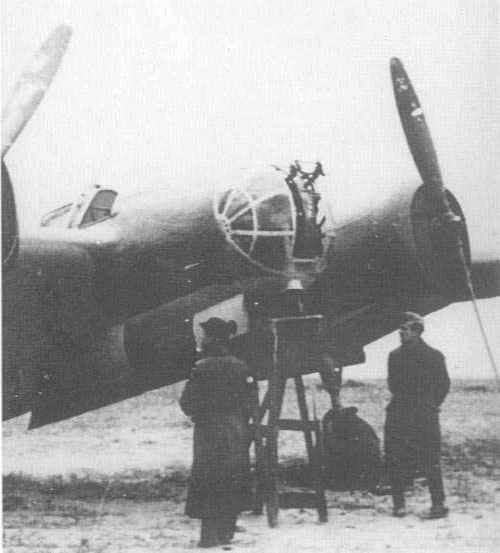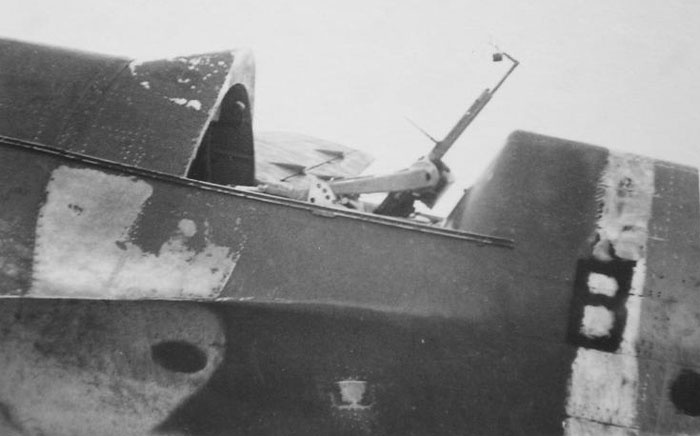1
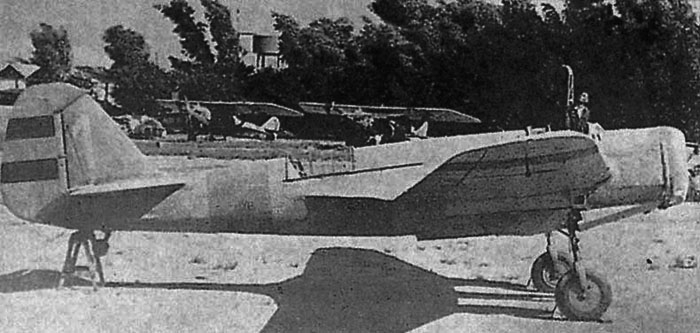
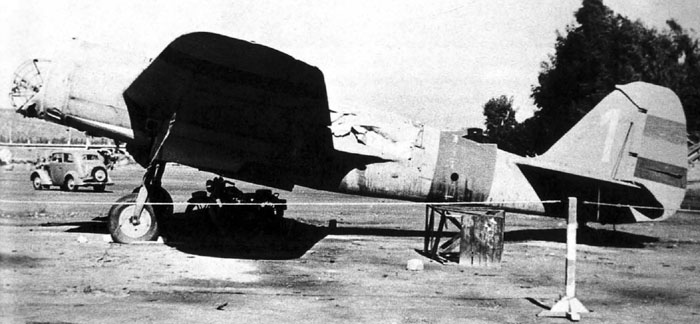
Left:
Plane White 1 was captured by Nationalists in February 1937; it had to land forcedly after having been hit by a CR-32 fighter.
Here it is photographed in Tablada air base near Sevilla.
Plane white 1 looks an early delivery with M-100 engines because of the lack of the extension of the windshield for the backwards mirror.
The upper color is rather light; it could be uniform light brown or brick brown as suggested by some reports.
Seems that the plane was captured when photographed; the red band on the fuselage appears much lighter than on the tail, probably it was already deleted with some (brown?) paint at the date of the photo. This has covered the code BK(Bombardero Katiuska)-??? that was likely painted on it.
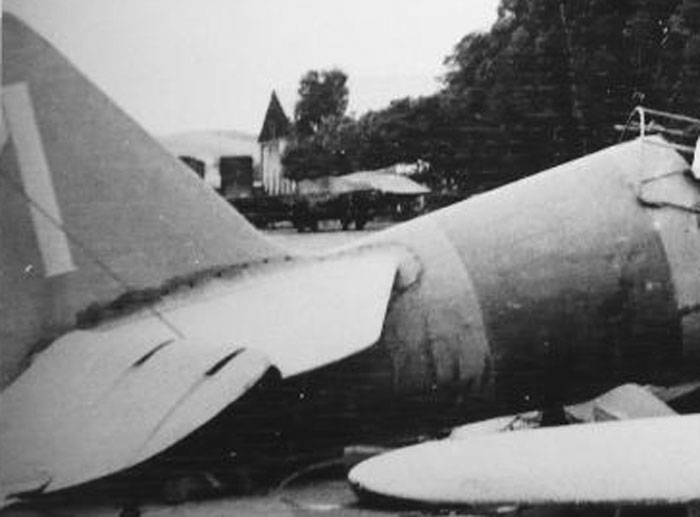
A detail of plane 1, dismantled, that confirms that the color of the uppersurface was uniform. Some details of the font of n.1 are recognizable.
It seems to see a sort of black n.6 or B painted on the fuselage. It could be part of the usual BK-0?? code frequently seen on the fuselages of Spanish Katiuskas, that could have been deleted when the plane was still in Republican service.
According to some sources, it was repainted and sent into service by Nationalists. Our exam of photos suggests that this was not the case.
This could be the plane exposed to the Grand Kursaal of San Sebastiàn, where it appears unvarnished.
Below: reconstruction of the look of plane 1 when still in Republican service.
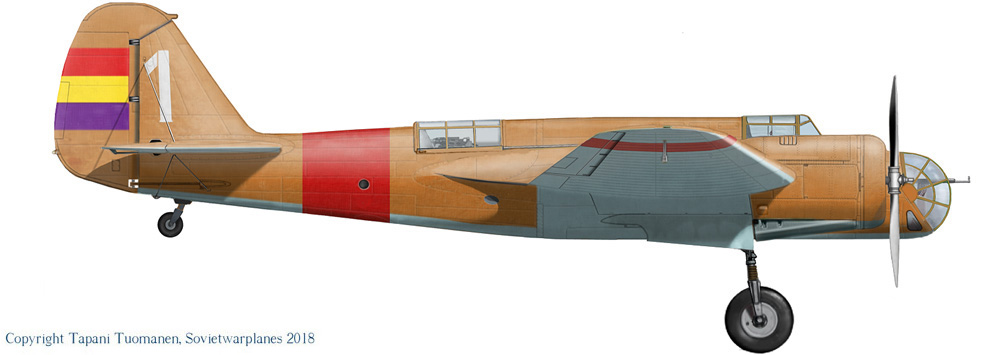
2
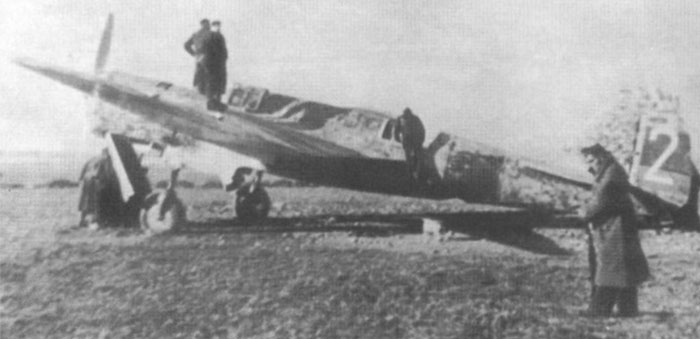
Nationalists captured another SB on 12 August 1938 when it had to land in Guadalajara province.
According to Spanish sources, it was exposed to the Grand Kursaal of San Sebastiàn, where it appears unvarnished.
In our opinion, this plane is the one reemployed by Nationalists with a nearly unaltered camouflage, as suggested by the resemblance of the dots, and the plane exposed was n.1
Left:
Plane 2 captured by Nationalists.
The tricolor on the rudder and the band on the fuselage seem already altered. On the ground, one can see what seems a can of paint.
.
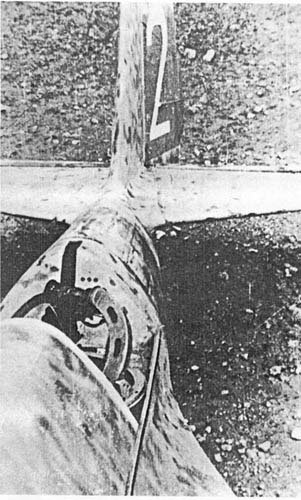
Closer image of plane 2.
A close up of the camouflage suggests that the background color is the medium one, probably brown or brick red, and the darker blotches (probably green) and the lighter ones (probably sand yellow) were added on it.
The third and last one was captured when it had to land in Aragona. Its crew was Russian
Below: an attempt of reconstruction of the look of plane 2 when still in Republican service.
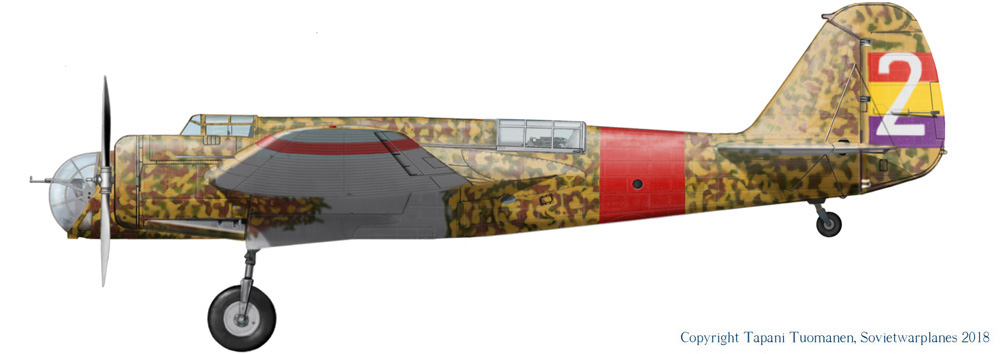
3
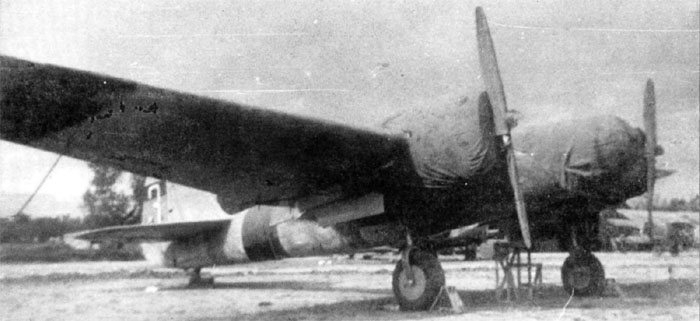
Republican SB n.3, apparently similar to n.1.
It is unclear if the plane has some low-contrasting blotches on the sand or tan background.
4
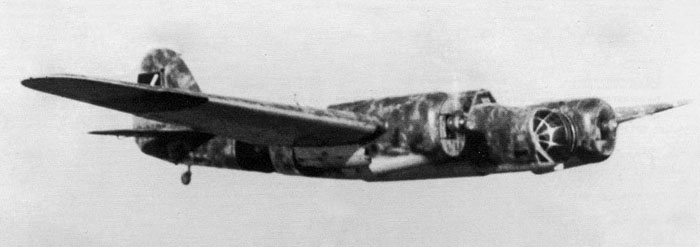
Plane 4 in flight. This plane has a good resemblance to plane 2: the bort number is painted on the rudder, and the camouflage seems obtained with dark and light blotches on a medium background. Not the light frames of the nose and canopy.
The plane hasn't the backwards mirror atop the windshield, but the waste shells ejection outlet is well visible under the nose. The sliding hood of the rear gunner looks missing.
Republican Katyuska No Number
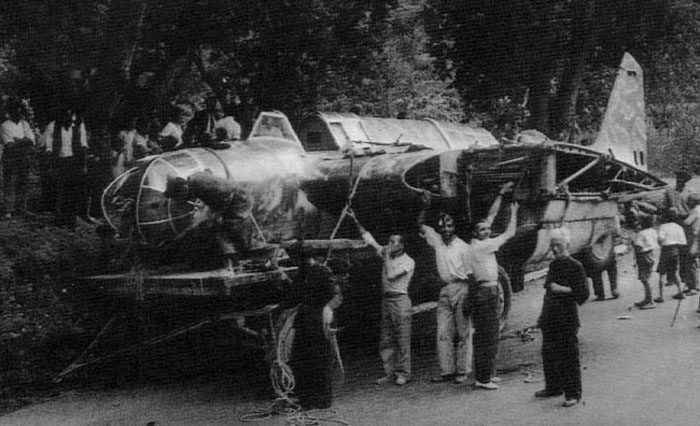
Lots of photos are available about this plane after its capture by nationalist forces.
Here the plane looks dismounted for transport after a belly landing.
We haven't informations about it.
It could be the third plane captured by Nationalists in Aragona, whose crew was Russian.
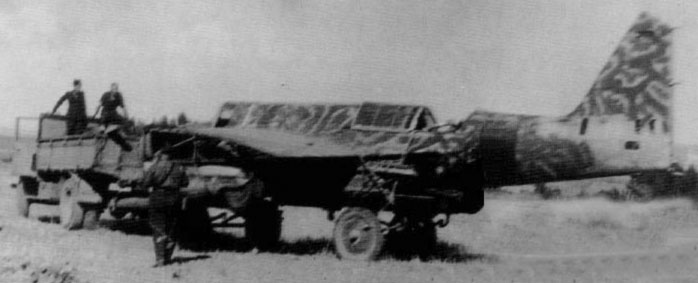
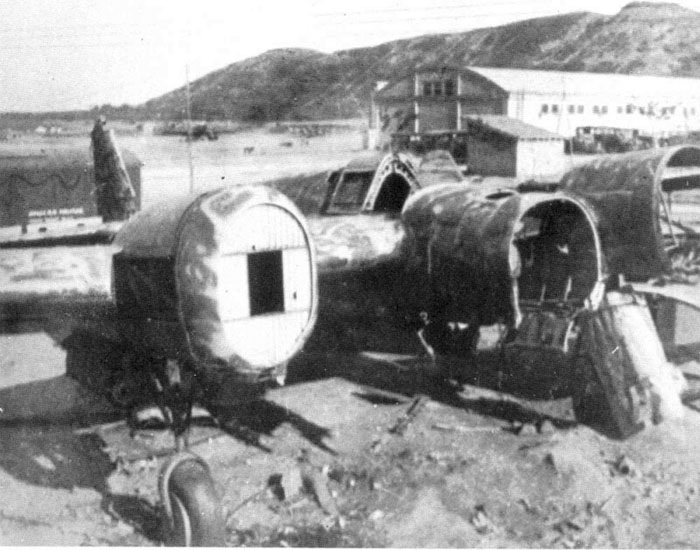

The image shows the plane with its wings and rudder on. It seems that the colorful rudder could have been blotched to reduce its evidence, or perhaps it is simply dirty.
It looks even that some of the red paint of the fuselage band was scratched or blotched with camo paint.
Strangely, none number or code can be seen on the fuselage nor on the tail.
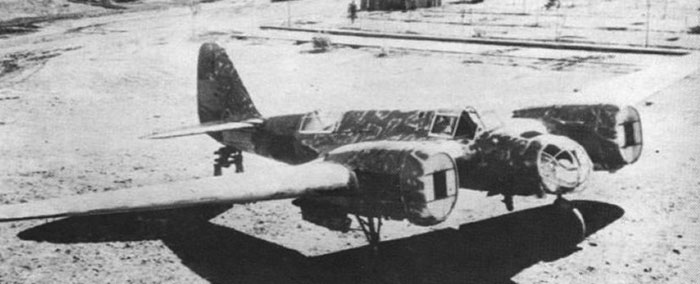
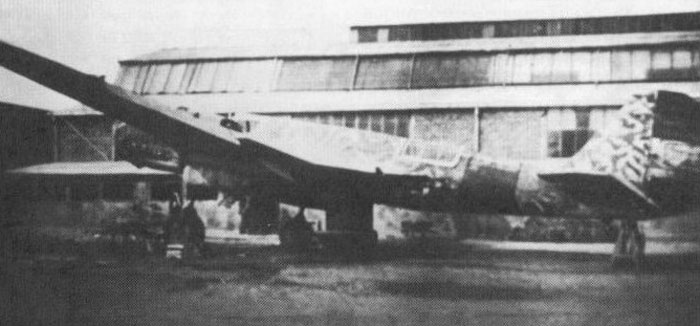
Aside:
further photo that looks to confirm that the rudder was blotched before the capture of the plane.
Below: a reconstruction of the likely look of the plane.
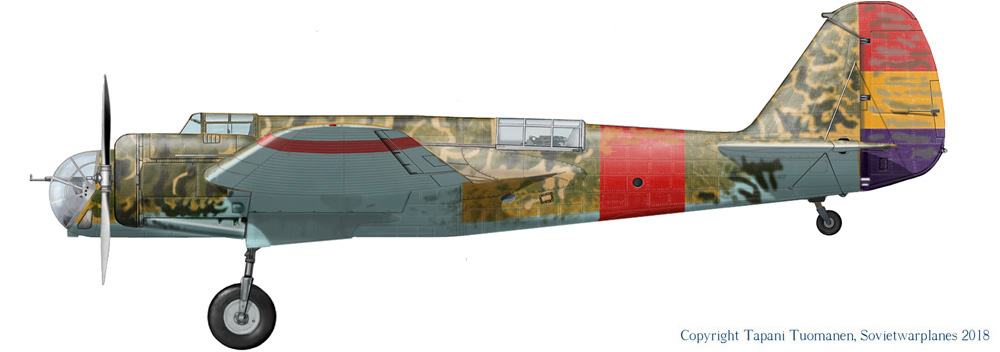
10
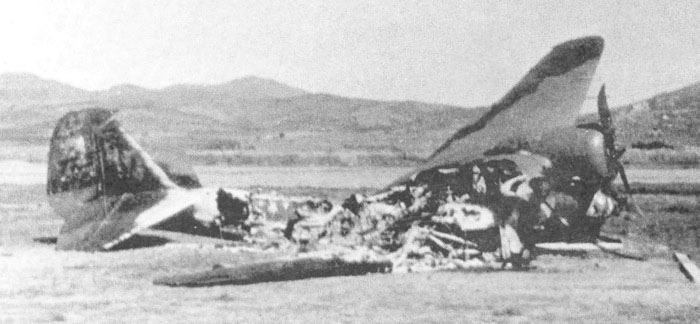
Left:
6 February 1939: the sad remains of what seems plane 10 of 24 Grupo. The red bands were deleted from the upper surface of the wings some time before the Republican defeat.
The contrast of the camouflage is surprising, it gives the impression of black and green. Anyway, it is more likely that the camo was dark green and tan. The pattern is similar to what can be seen on other planes of 24o Grupo, but mirrored.
16
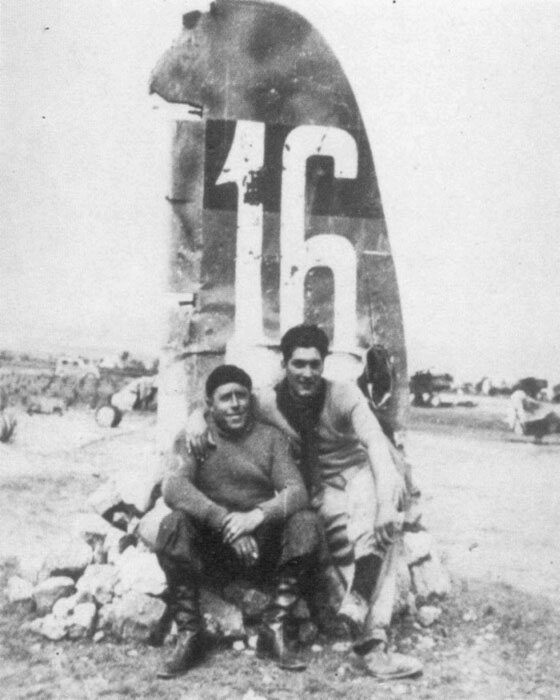
The rudder of plane 16, probably of 12o Grupo, as suggested by the number on the rudder and the dots camouflage.
The piece looks blocked in vertical as a sort of monument.
On the background, a CR-32 shows that this is a Nationalist airfield.
30
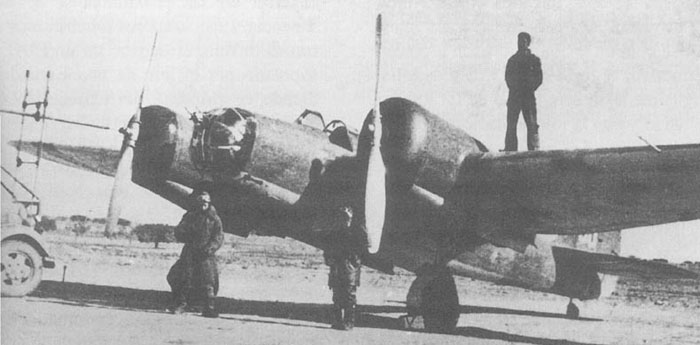
Photo of what seems plane n.30 of 24o Grupo.
The upper surface seems uniform dark green, or some low contrast camouflage.
The front rings of the cowlings look painted gloss black, possibly to improve cooling.
33
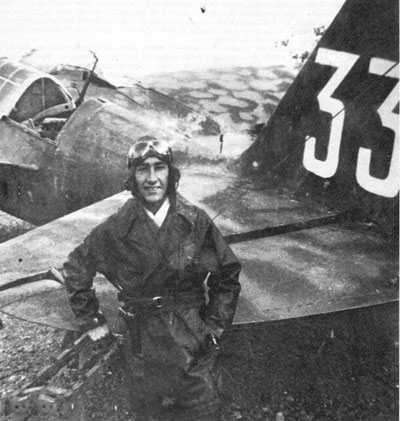
Left:
plane 33 shows a blotchy camouflage, apparently tan blotches over a dark green background.
Probably this is not the same of the plane 33 of 24o Grupo photographed below; at least, the font of the number isn't the same.
Below and right:
images of Republican SB. The plane was reportedly numbered 31, and the photo was taken in 1938 when the 24o Grupo was fighting to survive.
The camouflage could have a brown background with dark green and sand blotches.
The crew was composed of the pilot José Siruchida, the navigator KIasado Wilson, the gunner Garrera Enrique.
Images from
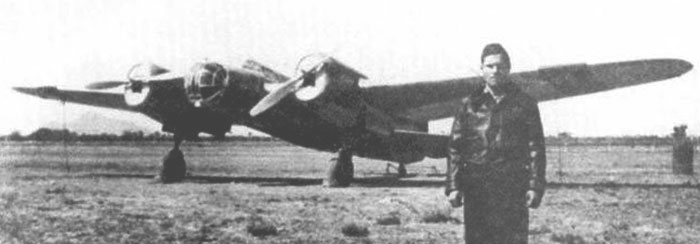
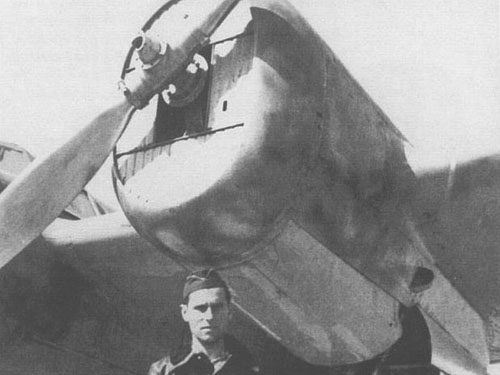
At the end of the war, Grupo 24 surrendered to Nationalists on 30 March 1939.
19 SB in Barajas air base were more or less serviceable.
Below, we see some of the planes. Their republican markings were altered after the capture: the purple band on the rudder of the planes (except n.52 at the date of the photo) was repainted, probably with a shade of yellow lighter than the one utilized by Republican, that contrasts. Besides the red bands on the fuselages were altered with a central light yellow band, that covered the previous codes; this alteration was later made on the red bands under the wings, while the red bands over the wings had already been deleted by Republicans by camo colors (perhaps not on n.46).
Many of the planes show a modified rear gunner position: the sliding hood was deleted, and an opaque metal windshield was added to protect the gunner's head against air flow.
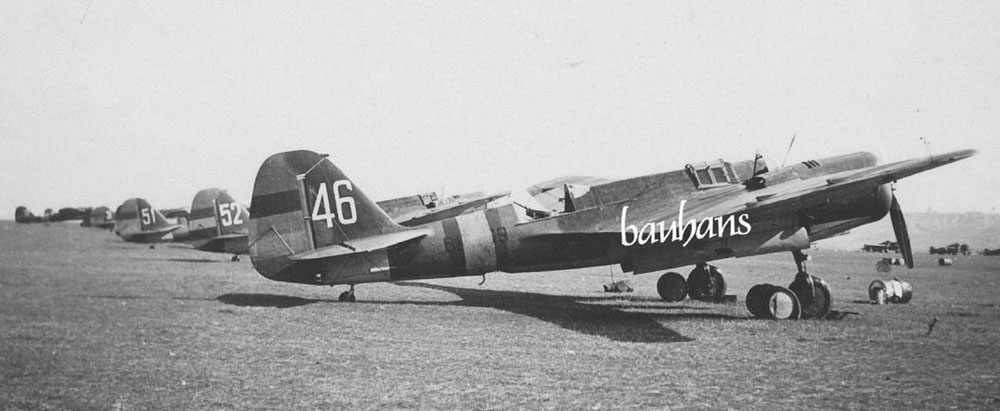
33
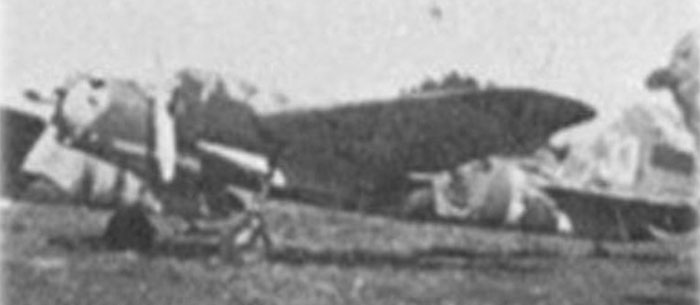
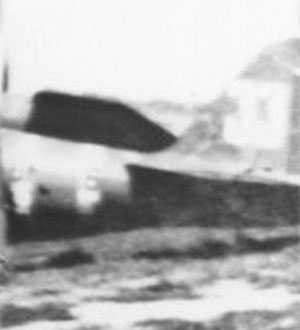
A detail of plane 33 shows the camouflage, apparently unique between the captured planes of this Grupo. It seems made with green blotches over a sand background, or perhaps sand lines over a green background.
Seems that the lighter bands on the fuselage (white?) were already made by Republicans, saving the code painted on; probably this was made when the unit surrendered.
It is unclear if the darker central one, probably made by Nationalists, was red or yellow.
The code on the fuselage is partially readable and seems BK-0?5.
34
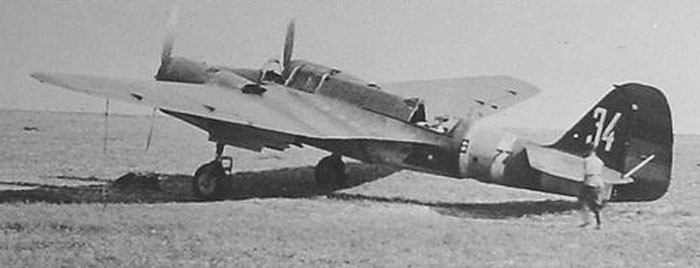
Plane 34 seems to have an uniform green uppersurface, while the emblems are already altered with light yellow and/or white on the fuselage and rudder.
Seems that the previous color of the fuselage band was white; this could have been painted by Republican crews when the unit had surrendered.
The bands under the wings seem still red, while they are not visible over the wings. The code was BK-077.
We see the modified rear gunner position.
The fairing of the ejection slot for the waste shells isn't visible, but the plane features the extension of the windshield for the rearward mirror; it is difficult to say if it was engined with M-100 or 100A.
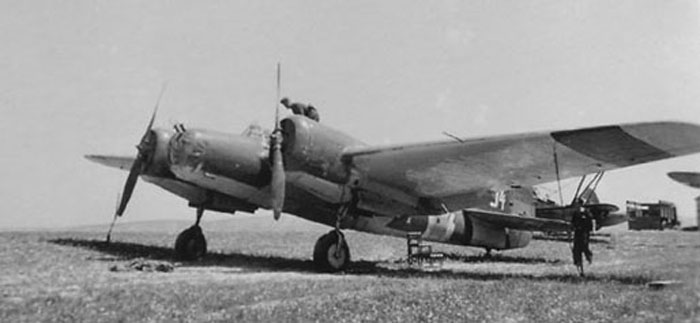
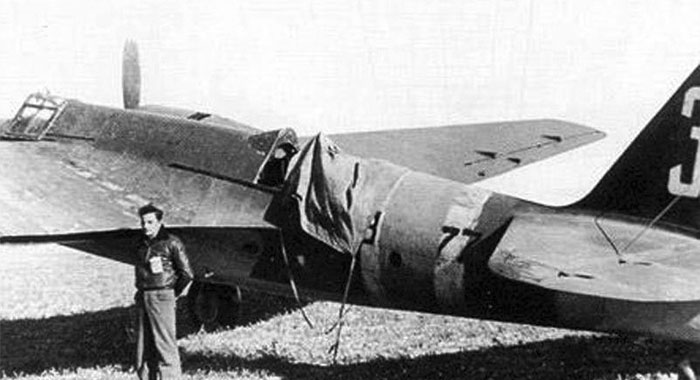
Below:
a reconstruction of the plane as it appeared on these photos.
During the war, the fuselage band had to be fully red, and the lower band on the rudder purple.
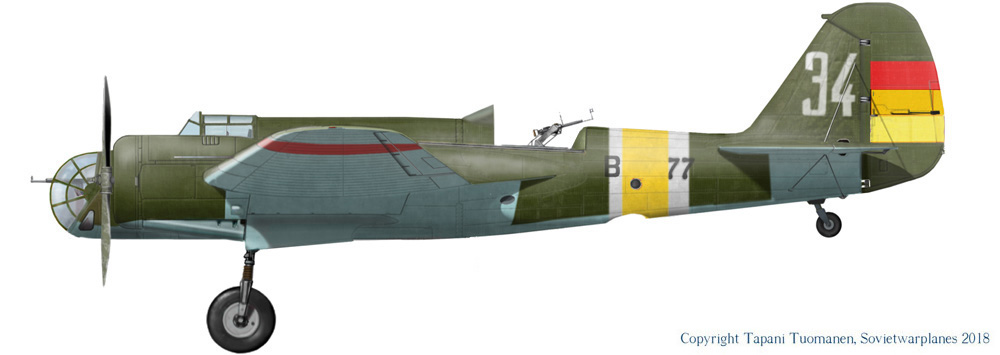
46
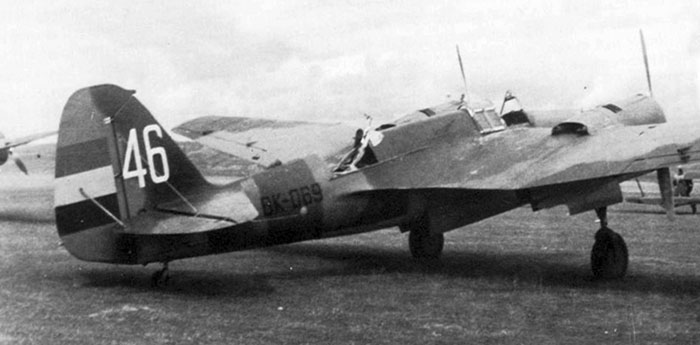
Plane 46 shows still unaltered markings, with the red band on the fuselage and the code BK-069 on it.
Note the camouflage and the lack of red bands over the wings, probably deleted by Republicans themselves to improve the camouflage of the planes. The repainting of the camouflage is still visible.
Note the lack of the sliding hood of the gunner, and the fairing that seems to show a bare metal surface.
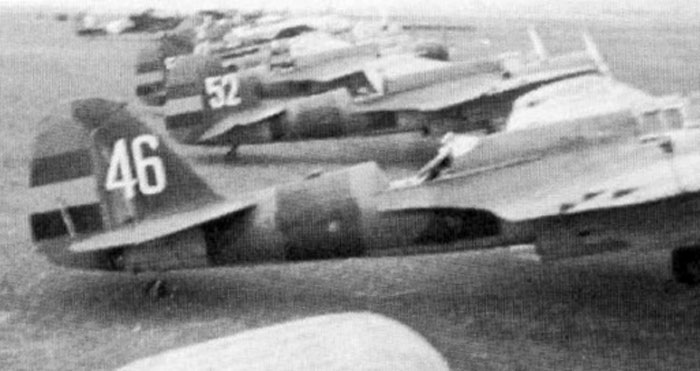
The planes of the same line, still with unaltered markings.
Below: a reconstruction of the look of plane 46. The red band over the wings was deleted before the end of the war to make the plane less visible.
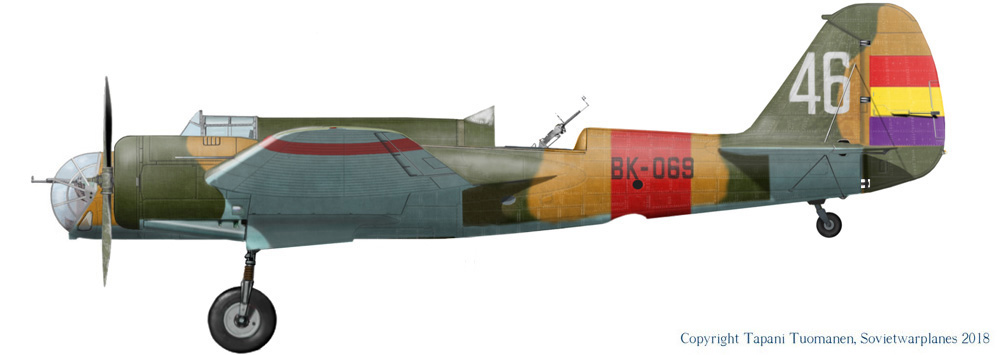
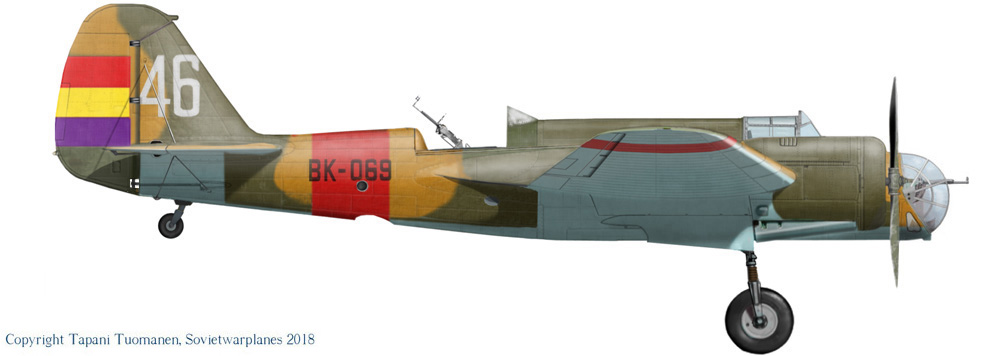
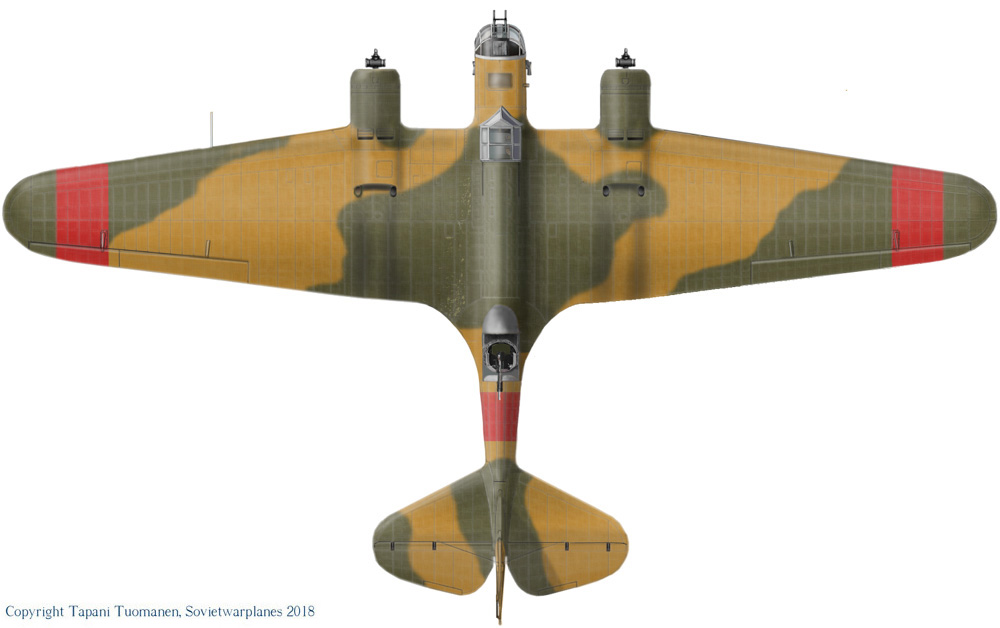
47
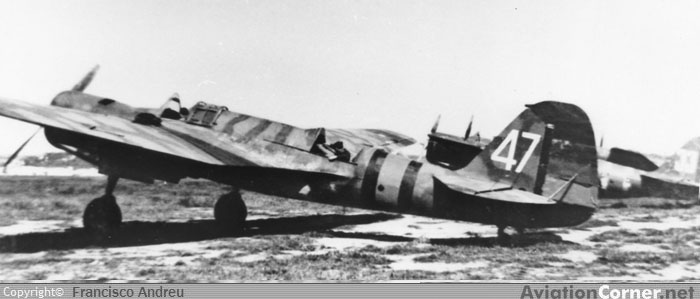
Photo of plane 47. The camouflage is noteworthy: it is made with long brown blotches on a dark green background.
The red band over the wings looks made thinner to reduce the visibility from above. The red band on the fuselage and the tricolor on the rudder were altered by Nationalists, probably by light yellow paint.
The rudder shows some very dark repaintings.
Note the modifications to the rear gunner position and the raised wind shield of the pilot.

Left:
On this photo plane 47 is visible on the background. Some detail of the camo pattern is recognizable.
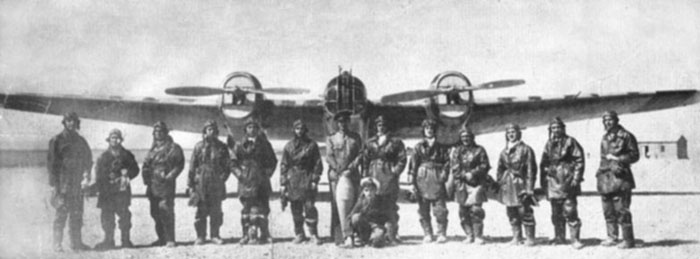
Left:
probably the same plane, or a very similar one, when still in service with the Republican Air Force.
Below: profile of plane 47 after a partial remarking, as seen on photo above.
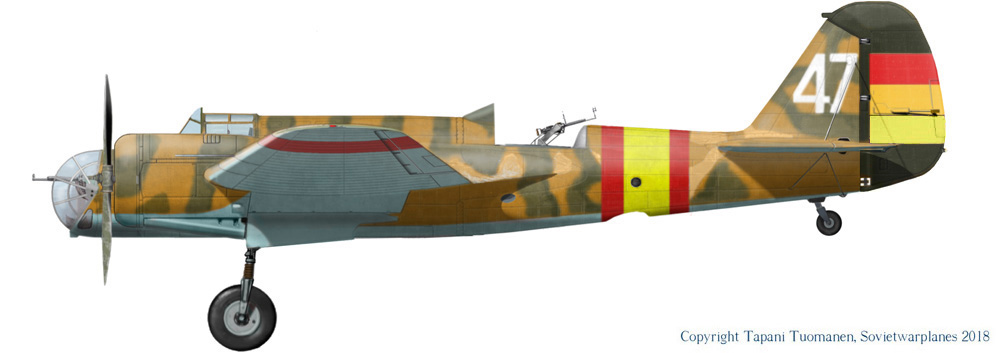
49

Plane 49 after the surround of the unit. The republican markings were altered. The code BK-043 is still partially readable on the fuselage.
This plane has the modified rear gunner's postation, but the pilot's windshield is of the low type.
The red bands over the wings seem already repainted with camo color by Republicans.
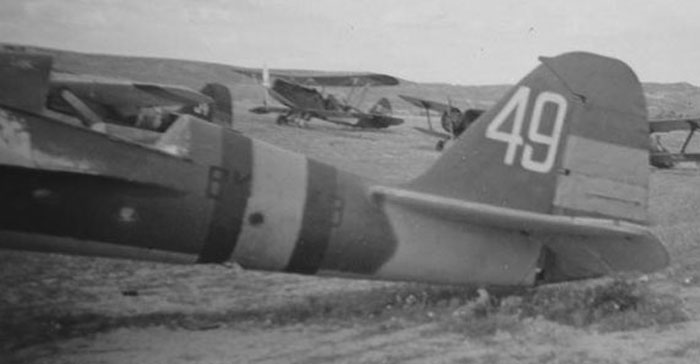

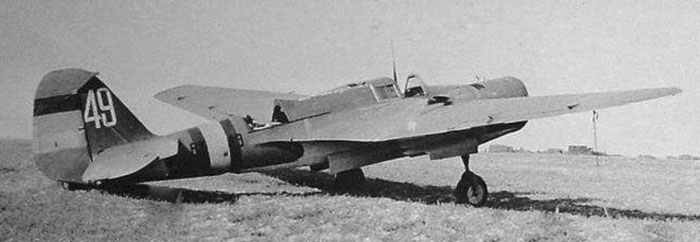
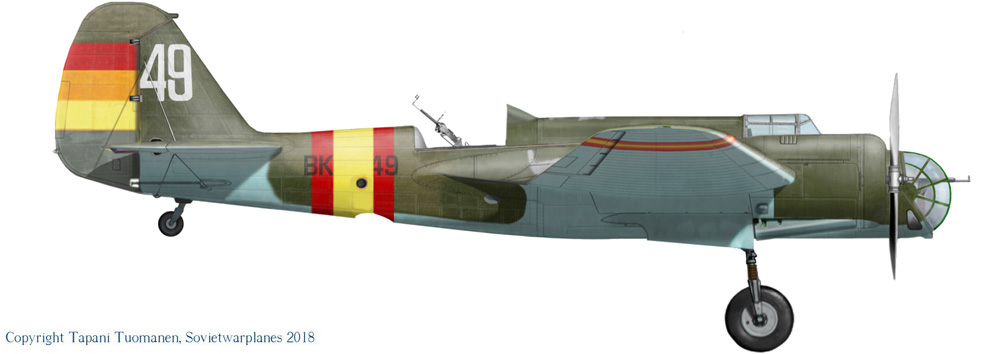
51

Left:
On this photo we see the line.
Plane 51, 47, 53 are recognizable.
The upper wing pattern o of the camouflage of plane 51 is recognizable.
52
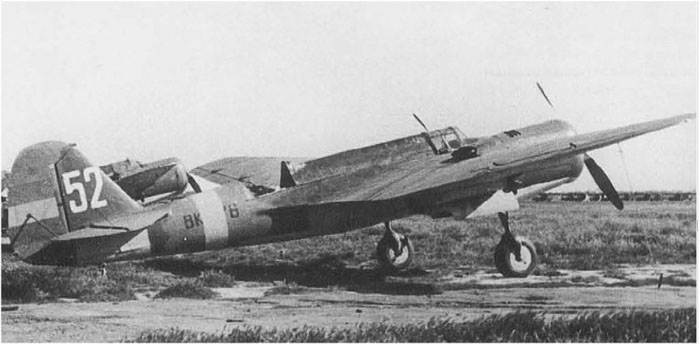
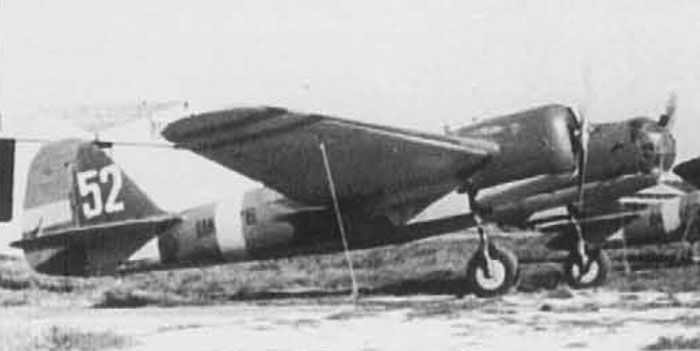
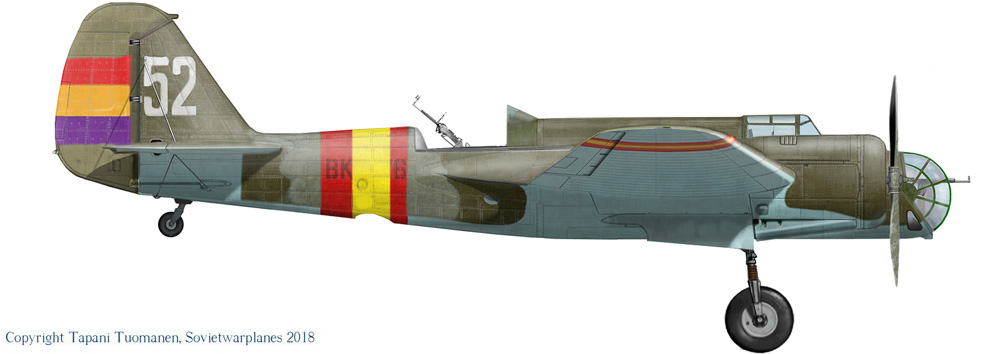
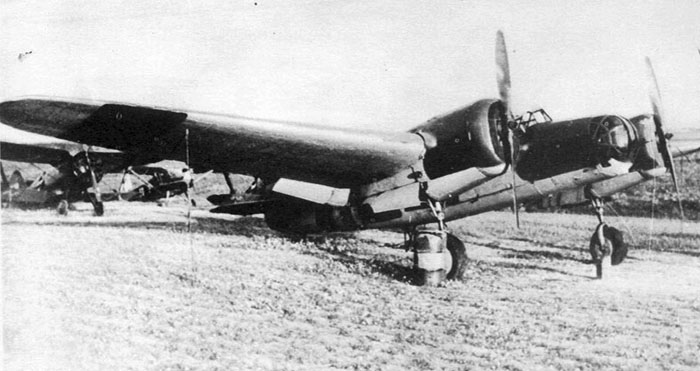
Left:
plane of 24o Grupo after the surrender. We can recognize an I-15, an I-152 and another plane on the background.
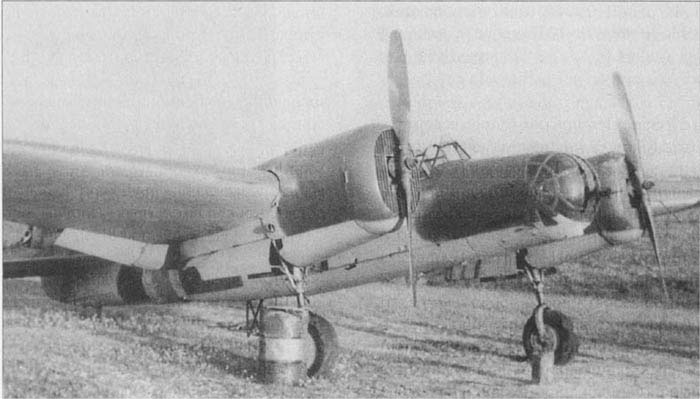
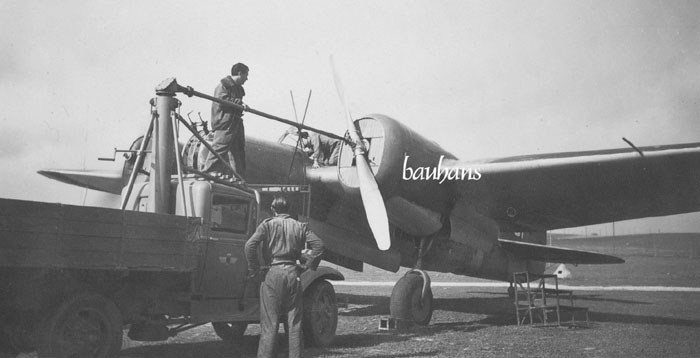
Left:
plane of 24o Grupo being started after the end of the war.
The red band on the fuselage has already been altered by yellow paint.
